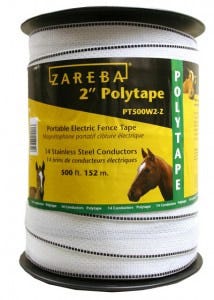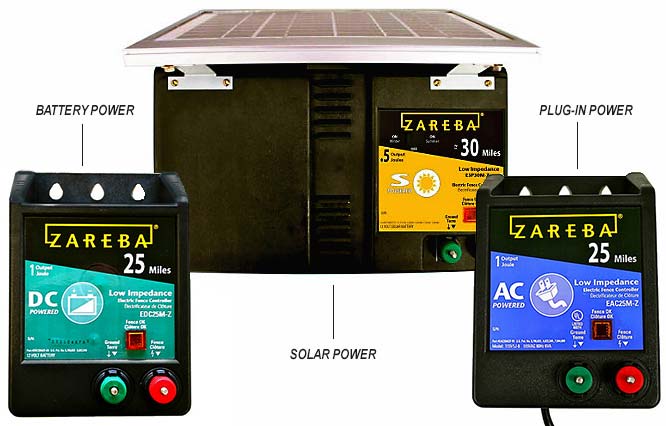
At some point, you may realize that your current fence just isn’t going to cut it. No matter how much maintenance you do, it’s too far gone or too poorly designed to safely contain your animals. In fact, whether you have cattle, horses, sheep or exotics, old style fences rarely make the grade.
For the most part, you can blame your animals for the damage to your fencing. Without a proper deterrent, they can press against the fence to reach vegetation, rub on it when they have a hard to reach itch or simply plow through it when the urge hits them.
The alternative is an electric fence, which can act as a deterrent to all these behaviors. At a fraction of the cost of replacing an old-style fence, you can retrofit your existing fence with just a few alterations that take just a few hours. The end result? An effective, easy-to-maintain electric fence.
 Board fences can deteriorate quickly if not maintained. By adding electric lines to board fences, you eliminate animal pressure on a board fence.
Board fences can deteriorate quickly if not maintained. By adding electric lines to board fences, you eliminate animal pressure on a board fence.Converting Board Fences
- Cost Per Foot: $7 for board, 8¢ for electric fencing
- Problems with Board Fences: Animals scratch, eat and chew the wood portions of the fence. Painting/sealing required. Weather deteriorates the wood.
For the most part, a lot of the pre-existing fence structure can be utilized as you convert a board fence to an electric fence. In fact, you can probably keep your entire fence intact – you’ll just be adding to it.
Your best bet is to use Zareba® Nail-On 5 Inch Extender Insulators so you can “build a fence on top of a fence.” These insulators hold electric fence wire 5 inches away from the fence structure, which stops animals from rubbing, chewing or leaning on it. For best results, run a hot wire along the top edge of the fence and at least one more about six inches off the ground. Additional wires should be added as necessary, depending on the animals being kept inside.
The great thing about converting a board fence to electric is that the electric fence will be nearly invisible to passersby while fully providing the electric-fence advantages you need to contain your animals.
 Barbed wire fences can lead to injuries to animals and people. While once popular, these fences are easy to retrofit into electric fencing.
Barbed wire fences can lead to injuries to animals and people. While once popular, these fences are easy to retrofit into electric fencing.Converting Barbed Wire Fences
- Cost Per Foot: 84¢ for barbed wire, 8¢ for electric fencing
- Problems with Barbed Wire Fences: Weather and rust deteriorates the wire. Can injure people and animals. Can trap animals. Splicing can be problematic.
When converting a barbed wire fence to an electric fence, you’ll want to remove the existing wire. Understand that electrifying barbed wire is very dangerous – people and animals could get trapped on the fence and subjected to repeated shocks as they struggle to get free.
When you remove the wire, also pull out staples and collect any that fall to the ground. Wind up and secure the old wire before you add it to the scrap pile.
With the old barbed wire removed, simply use your old fence posts to carry your new electric fence wire. Zareba has a wide variety of insulators that can be easily attached to a wood posts, what you choose depends on the wire or poly fence you are using. Before tensioning any wire, make sure your posts – especially your corner posts – are solid and firmly set in the ground.
 Woven wire fences can quickly deteriorate and lose their shape when animals try to get through them. As a result, they can quickly become problematic eyesores.
Woven wire fences can quickly deteriorate and lose their shape when animals try to get through them. As a result, they can quickly become problematic eyesores.Converting Woven Wire Fences
- Cost Per Foot: $1.07 for woven wire, 8¢ for electric fencing
- Problems with Woven Wire Fences: Weather and rust deteriorates the wire. Can trap animals. Quickly looks worn and loses its shape due to animal pressure.
There are two options for converting a woven wire fence to an electric fence. If your woven wire is still new and has little rust, then adding electric lines to it can greatly extend its life. By adding electric wire to it, animal pressure becomes virtually nonexistent which limits their ability to damage or stretch the wires. To do so, add an electrified wire on the top of the woven wire fence, and then one or more along the inside using special chain link insulators designed to attach to these fences.
If your woven wire is too far gone, peel it off your fence posts and add multiple wire strands. Electrify the top wire and add other hot wires as needed.
Checklist for Electric Fence Conversion
The good news about converting another fence to an electric fence is that some of the hardest work – digging and installing posts – has already been done for you.
With that out of the way, you can look at the fundamentals of installing an electric fence – installing insulators, running wire, setting up a ground wire and hooking up your fence charger.
That leaves you with a short list of supplies you’ll need for your conversion, including:
- Chargers – Depending on your power source, you can choose from an AC (plug-in) charger, a DC (battery) charger or solar charger. You’ll also need to choose the size of the charger – the longer the fence, the more power it will need. Likewise, some animal types won’t respond to low-powered shocks.
- Insulators – Insulators are available in multiple colors, but the real decider is how the insulator is mounted and what type of wire you’ll be using. For example, there are special insulators to handle poly tape and insulators that screw into wood posts.

- Grounding Systems – Without a system of ground rods, your fence won’t work. OurGrounding options gives you everything you need. Sectional ground rods are also an option for installation in unforgiving soil.
- Wire options – If you choose to retrofit your fence and make it an all-wire electric fence, you can run aluminum or steel If your old fence posts are strong enough, high tensile is an option too.
- Poly fence options – The various poly fence options are attractive and incredibly easy to install. Even better, the lines created by poly fencing are easy for animals to see, so they’re less likely to test the fence after their initial introduction to it. Choose from highly visible poly tape, sturdy poly rope, or easy-to-use poly wire.
- Fence Testers – Once you’ve got your fence installed, you’ll need to test it for proper voltage. Fence testers from Zareba® give you accurate readings and are an essential part of future maintenance efforts.

What Are Your Questions About Converting a Fence?
Need some more help on what to do to convert your old fence to electric? First, check out the Zareba® Learning Center for a complete guide on electric fencing. If you have additional questions, contact our dedicated Consumer Care Team at 855-5-ZAREBA.



